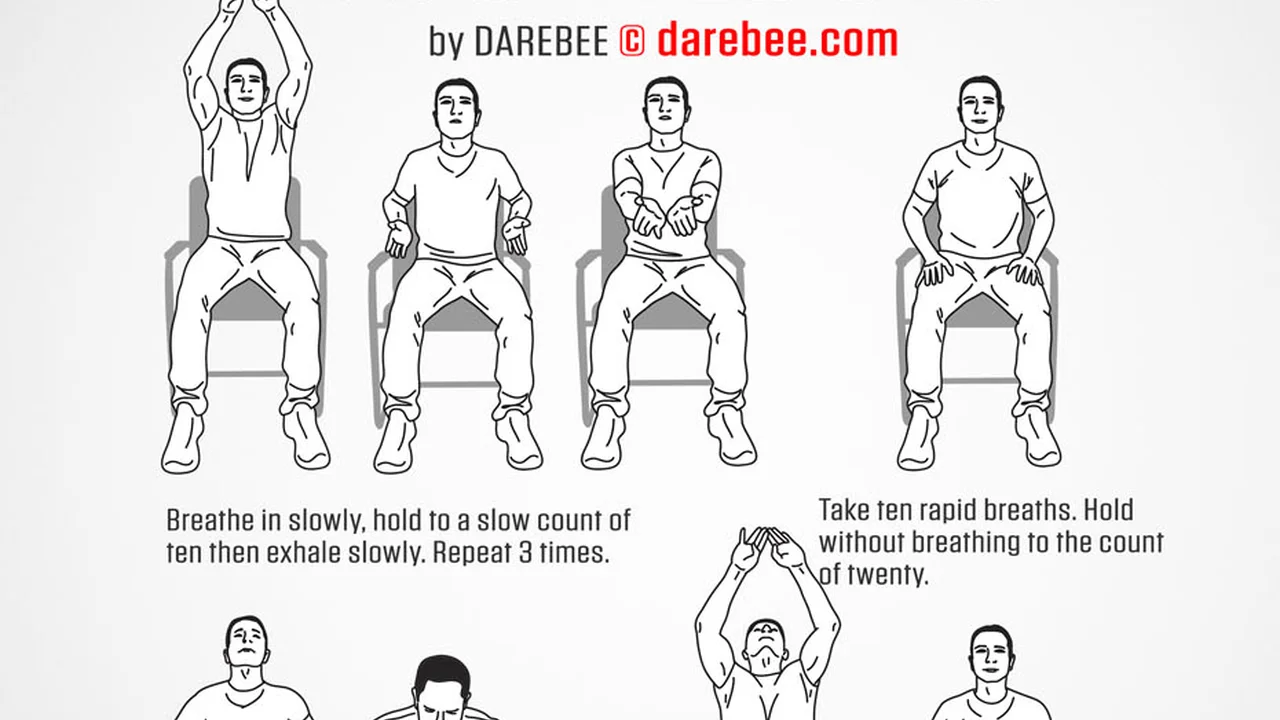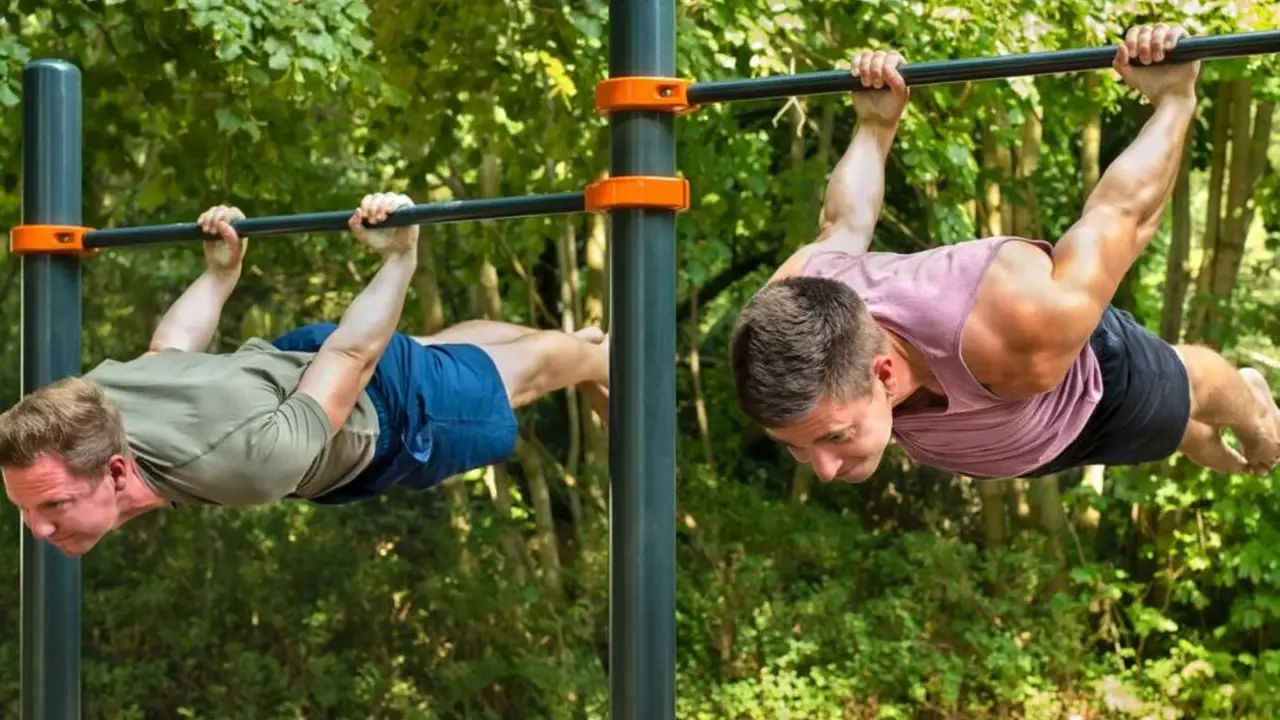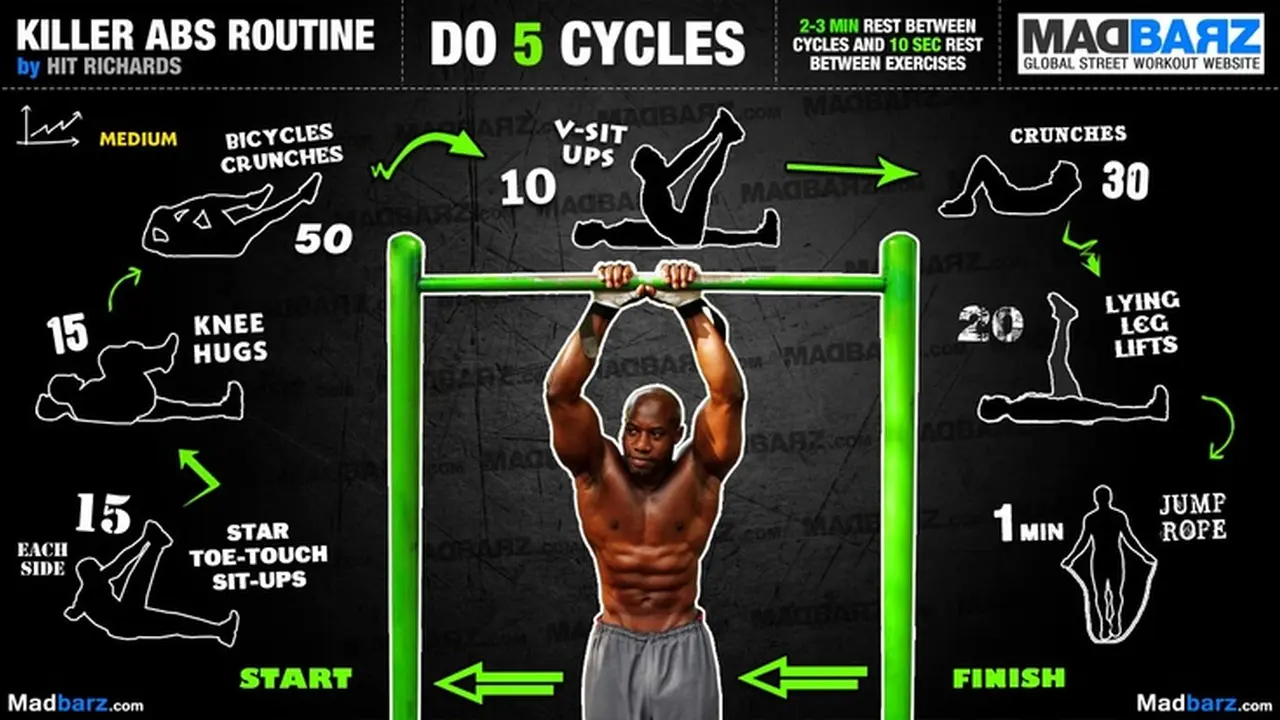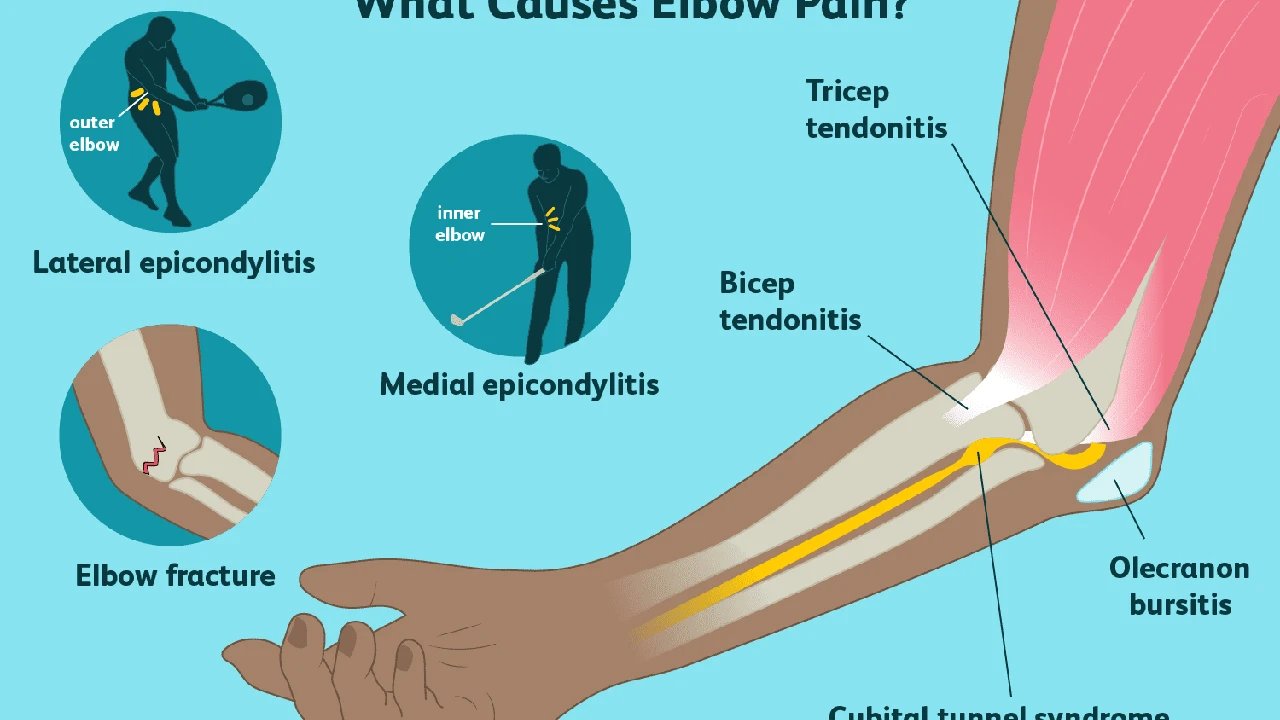Breathing Techniques for Street Workout

Introduction to Advanced Calisthenics and Bodyweight Training
So, you're ready to take your street workout game to the next level? You've mastered the basics – push-ups, pull-ups, dips – and now you're itching to explore more advanced movements and techniques. This article is your comprehensive guide to pushing your limits, building incredible strength, and achieving feats of athleticism you never thought possible.
We'll delve deep into the world of advanced calisthenics, covering everything from progressions for complex skills like the muscle-up and planche to the importance of proper nutrition and recovery. But we're not just talking theory here. We'll also explore specific product recommendations – from resistance bands to wrist wraps – that can help you optimize your training and reach your goals faster. Let's get started!
Progressing Beyond the Basics: Building a Solid Foundation
Before you start attempting gravity-defying feats, it's crucial to ensure you have a rock-solid foundation. This means mastering the fundamental movements with impeccable form and building a base level of strength and endurance. Think of it like building a skyscraper – you need a strong foundation to support the towering structure above.
What does a solid foundation look like? It means you can comfortably perform the following:
- 20+ unbroken push-ups with perfect form
- 10+ strict pull-ups with a full range of motion
- 15+ bodyweight dips
- 30+ squats
- Holding a plank for at least 60 seconds
If you can't consistently achieve these numbers, focus on improving your fundamental strength before moving on to more advanced exercises. Patience is key in calisthenics. Rushing the process can lead to injuries and hinder your long-term progress.
Mastering the Muscle-Up: A Step-by-Step Guide
The muscle-up is often considered the gateway to more advanced calisthenics skills. It's a compound movement that combines a pull-up and a dip, requiring significant upper body strength and coordination. Let's break down the progression:
- False Grip Pull-Ups: This is crucial. The false grip (where your wrists are positioned above the bar) allows you to transition smoothly from the pull-up to the dip. Practice holding the false grip for as long as possible, gradually increasing your hold time.
- High Pull-Ups: Focus on pulling your chest as high as possible, aiming to get your nipples to the bar. This will help you build the explosive power needed for the muscle-up.
- Transition Drills: Practice transitioning from the pull-up to the dip. You can use a low bar or assisted band to make this easier. Focus on keeping your elbows close to your body and pushing up and over the bar.
- Negative Muscle-Ups: Slowly lower yourself from the top of the muscle-up. This will help you build strength in the muscles used during the exercise.
- Assisted Muscle-Ups: Use a resistance band or a spotter to help you complete the full muscle-up. Gradually reduce the assistance as you get stronger.
- Full Muscle-Up: Once you can confidently perform assisted muscle-ups, try the full muscle-up without any assistance. Focus on maintaining proper form and controlling the movement.
Product Recommendation: Resistance Bands for Assisted Muscle-Ups
Using resistance bands is an excellent way to assist with muscle-ups. They provide support at the bottom of the movement, allowing you to build strength and confidence. We recommend the Serious Steel Fitness Resistance Bands. These bands are durable, high-quality, and come in a variety of resistance levels.
Use Case: Loop the resistance band over the pull-up bar and place one or both feet inside the loop. This will reduce the amount of weight you need to lift, making the muscle-up easier. Gradually reduce the resistance of the band as you get stronger.
Product Comparison:
| Brand | Material | Resistance Levels | Price |
|---|---|---|---|
| Serious Steel Fitness | Latex | 6 | $$ |
| Rogue Fitness | Latex | 8 | $$$ |
| Fit Simplify | Latex | 5 | $ |
Detailed Information: The Serious Steel Fitness Resistance Bands are made from high-quality latex and are designed to withstand even the most intense workouts. They are available in six different resistance levels, ranging from XX-Small to X-Large. Prices range from $15 to $40, depending on the size and resistance level.
Unlocking the Planche: A Journey of Strength and Control
The planche is a highly advanced calisthenics skill that requires immense strength, balance, and control. It involves holding your body parallel to the ground, supported only by your hands. This is a long and challenging journey, but the rewards are well worth the effort.
- Wrist Strengthening: The planche places a tremendous amount of stress on your wrists. It's crucial to strengthen them before attempting any planche progressions. Exercises like wrist curls, reverse wrist curls, and wrist extensions can help.
- Scapular Protraction: This involves rounding your upper back and pushing your shoulders forward. This is essential for maintaining proper form during the planche. Practice scapular protraction exercises like scapular push-ups and hanging scapular retractions.
- Lean Push-Ups: Lean forward as far as possible during your push-ups. This will help you build the strength needed to support your bodyweight in the planche position.
- Tuck Planche: This is the first planche progression. Keep your knees tucked towards your chest and your body parallel to the ground. Focus on maintaining a straight line from your shoulders to your knees.
- Advanced Tuck Planche: Gradually extend your legs further away from your body. This will increase the difficulty of the exercise.
- Straddle Planche: Extend your legs out to the sides, forming a straddle position. This is a challenging progression that requires significant strength and balance.
- Full Planche: The ultimate goal. Extend your legs out straight behind you, forming a straight line from your head to your toes. This requires years of dedicated training and unwavering commitment.
Product Recommendation: Wrist Wraps for Planche Training
Wrist wraps provide support and stability to your wrists, reducing the risk of injury during planche training. We recommend the Iron Bull Strength Wrist Wraps. These wraps are made from durable cotton and elastic and provide excellent support for your wrists.
Use Case: Wrap the wrist wraps around your wrists before each workout. Make sure they are snug but not too tight. This will help to stabilize your wrists and prevent injuries.
Product Comparison:
| Brand | Material | Length | Price |
|---|---|---|---|
| Iron Bull Strength | Cotton and Elastic | 18 inches | $$ |
| Rogue Fitness | Cotton and Elastic | 24 inches | $$$ |
| Nordic Lifting | Cotton and Elastic | 12 inches | $ |
Detailed Information: The Iron Bull Strength Wrist Wraps are made from a durable blend of cotton and elastic. They are 18 inches long and provide excellent support for your wrists. Prices range from $20 to $30, depending on the color and design.
The Importance of Nutrition for Calisthenics Performance
You can't build a strong and capable body without proper nutrition. Your diet is the fuel that powers your workouts and provides the building blocks for muscle growth and repair. Here's a breakdown of the key nutrients you need to optimize your calisthenics performance:
- Protein: Essential for muscle growth and repair. Aim for 1.6-2.2 grams of protein per kilogram of bodyweight per day. Good sources of protein include meat, poultry, fish, eggs, dairy, and plant-based sources like beans, lentils, and tofu.
- Carbohydrates: Your primary source of energy. Choose complex carbohydrates like whole grains, fruits, and vegetables over simple carbohydrates like processed foods and sugary drinks.
- Fats: Important for hormone production and overall health. Choose healthy fats like avocados, nuts, seeds, and olive oil.
- Micronutrients: Vitamins and minerals are essential for various bodily functions, including energy production, immune function, and bone health. Eat a variety of fruits and vegetables to ensure you're getting all the micronutrients you need.
Product Recommendation: Protein Powder for Muscle Recovery
Protein powder can be a convenient way to supplement your protein intake, especially after workouts. We recommend Optimum Nutrition Gold Standard 100% Whey Protein. This protein powder is high-quality, affordable, and comes in a variety of delicious flavors.
Use Case: Mix one scoop of protein powder with water or milk and consume it within 30 minutes after your workout. This will help to repair muscle damage and promote muscle growth.
Product Comparison:
| Brand | Protein Type | Protein per Serving | Price |
|---|---|---|---|
| Optimum Nutrition | Whey Protein Isolate | 24 grams | $$ |
| MuscleTech | Whey Protein Blend | 30 grams | $$$ |
| Now Foods | Whey Protein Concentrate | 25 grams | $ |
Detailed Information: Optimum Nutrition Gold Standard 100% Whey Protein is a blend of whey protein isolate, whey protein concentrate, and whey peptides. It contains 24 grams of protein per serving and is available in a variety of delicious flavors. Prices range from $30 to $60, depending on the size and flavor.
The Role of Recovery in Advanced Calisthenics Training
Recovery is just as important as training. Your body needs time to repair and rebuild after intense workouts. Neglecting recovery can lead to injuries, fatigue, and decreased performance. Here are some key recovery strategies:
- Sleep: Aim for 7-9 hours of sleep per night. Sleep is essential for muscle growth, hormone regulation, and overall health.
- Nutrition: As mentioned earlier, proper nutrition is crucial for recovery. Make sure you're getting enough protein, carbohydrates, and healthy fats.
- Hydration: Drink plenty of water throughout the day. Dehydration can impair performance and hinder recovery.
- Active Recovery: Engage in low-intensity activities like walking, swimming, or yoga to promote blood flow and reduce muscle soreness.
- Massage: Massage can help to relieve muscle tension and improve circulation.
- Rest Days: Schedule regular rest days into your training program. This will allow your body to fully recover and prevent overtraining.
Avoiding Common Injuries in Calisthenics
Calisthenics is a relatively safe form of exercise, but injuries can still occur. Here are some common injuries and how to prevent them:
- Wrist Pain: Common in planche training. Prevent it by strengthening your wrists and using wrist wraps.
- Elbow Pain: Can be caused by overuse or improper form. Prevent it by warming up properly and using proper technique.
- Shoulder Pain: Can be caused by muscle imbalances or overuse. Prevent it by strengthening your rotator cuff muscles and using proper form.
- Lower Back Pain: Can be caused by weak core muscles or improper form. Prevent it by strengthening your core muscles and using proper technique.
Product Recommendation: Foam Roller for Muscle Soreness
Foam rolling can help to relieve muscle soreness and improve flexibility. We recommend the TriggerPoint GRID Foam Roller. This foam roller is durable, effective, and comes in a variety of sizes and densities.
Use Case: Roll the foam roller over your muscles for 30-60 seconds at a time. Focus on areas that are tight or sore. This will help to break up muscle knots and improve circulation.
Product Comparison:
| Brand | Material | Density | Price |
|---|---|---|---|
| TriggerPoint | EVA Foam | Medium | $$ |
| RumbleRoller | EVA Foam | Firm | $$$ |
| AmazonBasics | EPP Foam | Soft | $ |
Detailed Information: The TriggerPoint GRID Foam Roller is made from durable EVA foam and features a unique grid pattern that helps to target specific muscle groups. It is available in a variety of sizes and densities. Prices range from $30 to $50, depending on the size and density.
Designing Your Advanced Calisthenics Training Program
Now that you have a solid understanding of the principles of advanced calisthenics, it's time to design your own training program. Here are some key considerations:
- Set Realistic Goals: Don't try to do too much too soon. Start with small, achievable goals and gradually increase the difficulty of your training.
- Choose Exercises That Suit Your Goals: Focus on exercises that will help you achieve your specific goals. For example, if you want to learn the planche, focus on planche progressions.
- Progress Gradually: Don't jump ahead too quickly. Gradually increase the difficulty of your exercises as you get stronger.
- Listen to Your Body: Pay attention to your body and rest when you need to. Don't push yourself too hard, especially when you're first starting out.
- Track Your Progress: Keep track of your workouts and monitor your progress. This will help you stay motivated and make sure you're on track to achieve your goals.
Staying Motivated on Your Calisthenics Journey
Learning advanced calisthenics skills takes time, dedication, and perseverance. It's important to stay motivated and focused on your goals. Here are some tips for staying motivated:
- Set Realistic Goals: As mentioned earlier, setting realistic goals is crucial for staying motivated.
- Find a Training Partner: Training with a partner can help you stay accountable and motivated.
- Join a Calisthenics Community: Connecting with other calisthenics enthusiasts can provide support and encouragement.
- Celebrate Your Successes: Take the time to celebrate your accomplishments, no matter how small.
- Don't Give Up: There will be times when you feel discouraged, but don't give up. Keep practicing and you will eventually achieve your goals.
Advanced Calisthenics Skills: Beyond the Basics
Once you've mastered the muscle-up and planche, there's a whole world of advanced calisthenics skills to explore. Here are just a few examples:
- One-Arm Pull-Up: A true test of upper body strength.
- Front Lever: Holding your body parallel to the ground, supported only by your hands on a bar.
- Back Lever: Holding your body parallel to the ground, supported only by your hands on a bar, with your back facing the ground.
- Handstand Push-Ups: Performing push-ups while in a handstand.
- Human Flag: Holding your body parallel to the ground, supported only by one hand on a pole.
The Mental Game of Calisthenics: Mind Over Matter
Calisthenics is not just about physical strength; it's also about mental strength. You need to be able to overcome challenges, push through pain, and stay focused on your goals. Here are some tips for developing your mental game:
- Set Clear Goals: Knowing what you want to achieve will help you stay focused and motivated.
- Visualize Success: Imagine yourself successfully performing the skills you're working on.
- Practice Mindfulness: Focus on the present moment and avoid dwelling on negative thoughts.
- Embrace the Challenge: View challenges as opportunities to learn and grow.
- Believe in Yourself: Have confidence in your ability to achieve your goals.
Integrating Calisthenics with Other Training Modalities
Calisthenics can be effectively integrated with other training modalities, such as weightlifting, yoga, and martial arts. Combining different training methods can help you improve your overall fitness and prevent plateaus.
- Weightlifting: Weightlifting can help you build strength and power, which can be beneficial for calisthenics.
- Yoga: Yoga can improve your flexibility, balance, and core strength, which are all important for calisthenics.
- Martial Arts: Martial arts can improve your coordination, agility, and cardiovascular fitness, which can be beneficial for calisthenics.
The Future of Calisthenics: Innovation and Evolution
Calisthenics is a constantly evolving discipline. New exercises and techniques are being developed all the time. The future of calisthenics is bright, with more and more people discovering the benefits of this incredible form of exercise.
So, what are you waiting for? Start your advanced calisthenics journey today and unlock your full potential! Remember to be patient, persistent, and always listen to your body. The rewards are well worth the effort.
Advanced Core Strength Training for Calisthenics Mastery
A strong core is the foundation for all advanced calisthenics movements. It provides stability, power, and control, allowing you to execute complex skills with precision and grace. Neglecting core strength will significantly hinder your progress and increase your risk of injury. We're not just talking about crunches here; we're talking about a comprehensive approach to core training that targets all the muscles in your midsection, including the rectus abdominis, obliques, transverse abdominis, and erector spinae.
Here are some advanced core exercises that will take your calisthenics performance to the next level:
- Hollow Body Holds: This is a fundamental exercise for developing core stability. Lie on your back with your arms extended overhead and your legs extended out in front of you. Engage your core and lift your arms and legs off the ground, creating a "hollow" shape with your body. Hold this position for as long as possible.
- L-Sits: This exercise requires significant core strength and hip flexor flexibility. Sit on the ground with your legs extended out in front of you. Place your hands on the ground beside your hips and press down, lifting your body off the ground. Hold this position for as long as possible.
- Dragon Flags: This is a highly advanced core exercise that targets the entire abdominal region. Lie on your back on a bench or the floor. Grab onto something stable behind your head. Engage your core and lift your legs and hips off the ground, forming a straight line from your shoulders to your toes. Slowly lower your legs back down to the starting position.
- Hanging Leg Raises: Hang from a pull-up bar with your arms fully extended. Engage your core and lift your legs up towards your chest, keeping your legs straight. Slowly lower your legs back down to the starting position.
- Russian Twists: Sit on the ground with your knees bent and your feet slightly off the ground. Hold a weight or medicine ball in your hands. Twist your torso from side to side, touching the weight or medicine ball to the ground on each side.
Product Recommendation: Ab Wheel for Core Strengthening
An ab wheel is an effective tool for strengthening your core muscles. It forces your core to work hard to stabilize your body as you roll out and back in. We recommend the Perfect Fitness Ab Carver Pro. This ab wheel features a unique carbon steel spring system that provides resistance and assistance, making it easier to control the movement.
Use Case: Start on your knees with the ab wheel in front of you. Grip the handles and slowly roll the ab wheel forward, extending your body out as far as you can comfortably go. Engage your core and slowly roll the ab wheel back to the starting position. As you get stronger, you can progress to performing the exercise from a standing position.
Product Comparison:
| Brand | Wheel Material | Handle Material | Price |
|---|---|---|---|
| Perfect Fitness | Plastic with Rubber Tread | Foam | $$ |
| SKLZ | Plastic | Foam | $ |
| Fitnessery | Stainless Steel with Rubber Tread | Foam | $$$ |
Detailed Information: The Perfect Fitness Ab Carver Pro features a wide, stable wheel with a rubber tread for improved grip. The ergonomic handles are angled to help activate arm and core muscles. Prices range from $30 to $50, depending on the retailer.
Advanced Flexibility and Mobility Training for Calisthenics
Flexibility and mobility are often overlooked in calisthenics training, but they are crucial for preventing injuries and improving performance. Tight muscles can restrict your range of motion, limiting your ability to perform advanced skills and increasing your risk of strains and tears. Mobility, on the other hand, refers to the ability to control your movement through a full range of motion. It's not just about being flexible; it's about having the strength and stability to move freely and safely.
Here are some advanced flexibility and mobility exercises that will enhance your calisthenics performance:
- Pigeon Pose: This yoga pose stretches the hip flexors, glutes, and piriformis muscles. Start on your hands and knees. Bring your right knee towards your right wrist and your right ankle towards your left wrist. Extend your left leg straight back behind you. Lower your hips towards the ground and hold the pose for 30-60 seconds. Repeat on the other side.
- Couch Stretch: This stretch targets the quadriceps and hip flexors. Place one foot on a wall with your knee bent at a 90-degree angle. Step forward with your other leg until you feel a stretch in your quadriceps and hip flexors. Hold the stretch for 30-60 seconds. Repeat on the other side.
- Thoracic Spine Rotation: This exercise improves mobility in the thoracic spine (upper back). Sit on the ground with your legs crossed. Place your hands behind your head. Rotate your torso from side to side, keeping your hips stable.
- Shoulder Dislocates: This exercise improves shoulder mobility and flexibility. Hold a light stick or PVC pipe in front of you with your hands wider than shoulder-width apart. Slowly rotate the stick over your head and behind your back, keeping your arms straight.
- Wrist Stretches: As mentioned earlier, wrist stretches are crucial for preventing injuries in calisthenics. Perform wrist curls, reverse wrist curls, and wrist extensions regularly.
The Power of Isometrics in Calisthenics Training
Isometric exercises involve contracting your muscles without any movement. They are a powerful tool for building strength, improving muscle activation, and enhancing stability. Isometric training can be particularly beneficial for calisthenics, as it allows you to develop strength in specific positions, which can translate to improved performance in advanced skills.
Here are some isometric exercises that you can incorporate into your calisthenics training:
- Planche Holds: Hold the tuck planche, advanced tuck planche, or straddle planche position for as long as possible.
- L-Sit Holds: Hold the L-sit position for as long as possible.
- Handstand Holds: Hold a handstand against a wall or freestanding for as long as possible.
- Pull-Up Holds: Hold the top position of a pull-up for as long as possible.
- Push-Up Holds: Hold the bottom position of a push-up for as long as possible.
Advanced Calisthenics Programming Strategies: Periodization and Deloading
To maximize your progress and prevent overtraining, it's important to implement effective programming strategies such as periodization and deloading. Periodization involves cycling through different phases of training, each with a specific focus. Deloading involves reducing the intensity and volume of your training for a short period of time to allow your body to recover and adapt.
Here's an example of a periodized calisthenics program:
- Phase 1: Strength Phase (4-6 weeks): Focus on building strength with lower repetitions (3-5 reps) and higher intensity (80-90% of your 1-rep max).
- Phase 2: Hypertrophy Phase (4-6 weeks): Focus on building muscle mass with moderate repetitions (8-12 reps) and moderate intensity (70-80% of your 1-rep max).
- Phase 3: Power Phase (2-4 weeks): Focus on developing power with lower repetitions (1-3 reps) and explosive movements.
- Deload Week (1 week): Reduce the intensity and volume of your training by 50-70%.
Remember to listen to your body and adjust your training program as needed. Consistency, patience, and a well-structured program are key to achieving your advanced calisthenics goals.
:max_bytes(150000):strip_icc()/277019-baked-pork-chops-with-cream-of-mushroom-soup-DDMFS-beauty-4x3-BG-7505-5762b731cf30447d9cbbbbbf387beafa.jpg)






